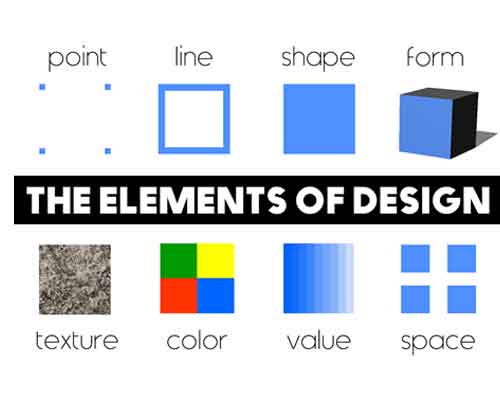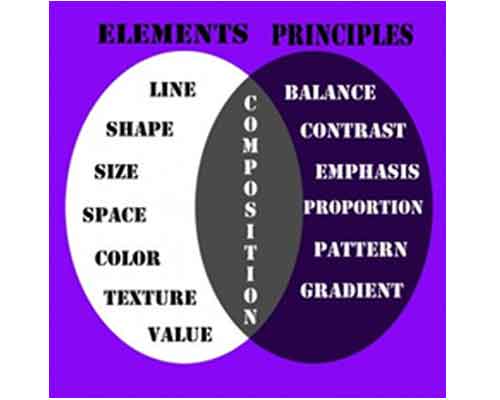When producing any visual piece of art, whether it’s for interior design, a
logo, an advertisement, or a website, there are a number of graphic
design aspects to consider. The following are the fundamental aspects of
design:

- Color: Color contributes to the mood of your composition. Color is the experience that a human perceives when light waves strike an item and reflect back to the optic nerve in their eyes. Color is used by artists and designers to show and explain the subject. Designers utilise colour to convey mood, light, dimension, and point of view. To construct colour schemes, designers use the colour wheel and the concepts of colour theory—a set of rules for mixing, combining, and manipulating colours.
- Line: The way two points in space are connected is referred to as a line. Lines can assist focus the eye to a specific spot in your composition, whether they’re horizontal, diagonal, or vertical. Different sorts of lines, such as curved or patterned lines, can also be used to produce texture instead of just straight lines.
- Value: In design, value refers to the lightness or darkness of a color. A gradient is a visual representation of a color’s values, which shows a series of variations on one hue, organised from lightest to darkest. Artists can use the various values of color to create the illusion of mass and volume in their work..
- Space: Making effective use of space might assist people in seeing your design in the way you intended. The area between or surrounding the focal focus of a picture is known as white space or negative space. Positive space is the area in your composition that your subject matter occupies. Because a cluttered layout might overwhelm the viewer’s eye, the spacing of your design is crucial.
- Shape: A shape is a two-dimensional area bordered by an outline in its most basic form. Other aspects such as line, colour, value, and shadow can be used by graphic artists to give a shape the appearance of three-dimensionality. Organic shapes, which exist naturally in the environment, geometric shapes, which are angular and mathematically consistent, and abstract shapes, which represent things in nature but aren’t precisely representative, are the three sorts of shapes.
- Form: The way a shape or physical structure occupies space is referred to as form. Instead of using three-dimensional physical shape to create form, designers use light, shadow, the appearance of an object’s contours, negative space, and the surrounding objects to create the appearance of form on a flat surface.
- Texture: One of the design components that is utilized to depict how an object appears or feels is texture. Tactile texture refers to how something feels when you touch it, whether it’s rough, smooth, or ribbed. Visual texture, on the other hand, relates to the imagined feel of the illustrated texture, which can add visual interest and sensory stimulation..
What Is the Difference Between Design Elements and Design Principles?
The essential building blocks of any composition are referred to as design components. The employment of features such as symmetrical and asymmetrical balance, pattern, emphasis, movement, and proportion are all examples of design principles. The design principles are a set of basic rules and approaches for assembling various design elements.



